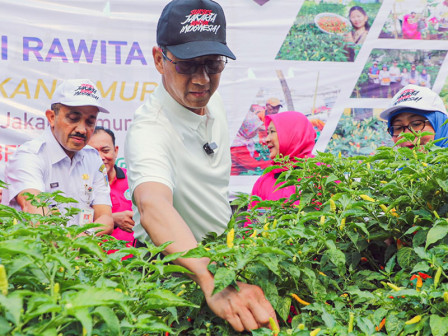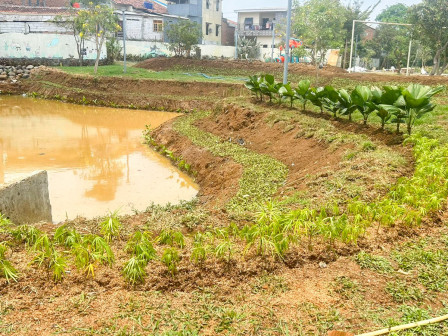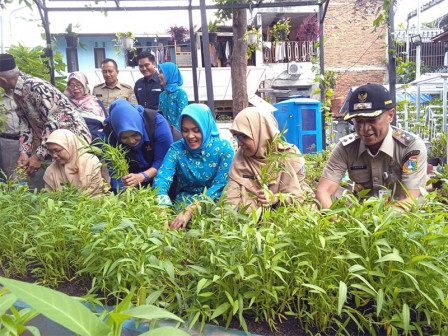Heru Distributes 3.5 Tons of Cayenne Pepper Harvest to Residents
Reported by Aldi Geri Lumban Tobing | Translated by Nugroho Adibrata
Jakarta Acting Governor, Heru Budi Hartono together with Jakarta Provincial Government officials harvest cayenne pepper at Rawa Jaya RPTRA, Pondok Kopi Urban Village, Duren Sawit, East Jakarta, Wednesday (11/1).
Today, we harvested 3.5 tons of cayenne pepper
It was carried out simultaneously in 65 locations throughout East Jakarta and broadcast via Zoom by 10 sub-districts. The harvest reached 3.5 tons and was distributed to residents to meet their needs amidst the soaring price of chilies on the market.
"I appreciate the synergy between the East Jakarta Mayor and all sub-district heads to ensure that every available land, whether 10 meters or 20 meters is planted with food crops. There are chilies, eggplants, peanuts, kale, grapes, and pumpkins, this is done throughout the sub-district. Today, we harvested 3.5 tons of cayenne pepper. This is one form of maintaining food security in Jakarta," he expressed, in the Jakarta Government's press release.
Various Events Enliven Urban Farming Festival at Jakarta City HallAfterward, he and the TP PKK Acting Chairwoman Mirdiyanti also greeted some civil servants and PKK cadres via Zoom, to discuss regional conditions and environmental security. Both also checked several facilities and plantation land available at the Rawa Jaya RPTRA.
Jakarta Maritime, Agriculture, and Food Security Agency (KPKP) Head, Suharini Eliawati added the massive community movement to plant and harvest chilies had a positive impact on food security in Jakarta.
"This is real evidence and has become a community planting movement. Why do we choose chilies? Chilies are a product or commodity that is easy to harvest, with the hope that when the price is high on the market, mothers will still be able to meet their needs," she explained.
She also addressed the impact of El Nino felt by Jakartans. As a result, the chili harvest, which should have been done seven times, is now only harvested three to four times.
"Currently, it is true that there is a decrease in the supply of chilies. So, for me, it is appropriate that we harvest 34,000 trees out of the 100,000 planted in September. Reports from the urban village heads, there have been three to four harvests. Usually, seven harvests but the number decreases after. If it decreases, we replace the plants," she uttered.





